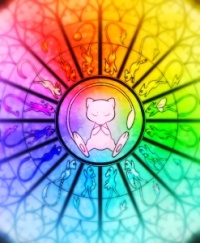| Theatre (Entertainment) | Topics | Posts | Last Posts |
|---|
 | Opera, Operette and Zarzuela
| 0 | 0 | |  | A style in which a comedian performs in front of a live audience, speaking directly to them. The performer is commonly known as a comic, stand-up comic, stand-up comedian or simply a stand-up. In stand-up comedy the comedian usually recites a fast-paced succession of humorous stories, short jokes called "bits", and one-liners, which constitute what is typically called a monologue, routine or act. Some stand-up comedians use props, music or magic tricks to enhance their acts. Stand-up comedy is often performed in comedy clubs, bars, neo-burlesques, colleges, and theaters. Outside of live performance, stand-up is often distributed commercially via television, DVD, and the internet.
| 0 | 0 | |  |
Cinematography : A film genre (/ˈʒɒnrə/ or /ˈdʒɒnrə/) is a motion picture category based on similarities in either the narrative elements or the emotional response to the film (namely, serious, comic, etc.). Most theories of film genre are borrowed from literary genre criticism. The basic genres [2] include fiction and documentary, from which subgenres have emerged, such as docufiction and docudrama. Other subgenres include the courtroom and trial-focused drama known as the legal drama. Types of fiction which may seem unrelated can also be combined to form hybrid subgenres, such as the melding of horror and comedy in the Evil Dead films. Other popular combinations are the romantic comedy and the action comedy film. Films can also be classified by the setting, theme, topic, mood, format, target audience or budget. The setting is the environment where the story and action takes place (e.g., a war film, a Western film or a space opera film). The theme or topic refers to the issues or concepts that the film revolves around (e.g., science fiction film, sports film or crime film). The mood is the emotional tone of the film (e.g., comedy film, horror film or tearjerker film). Format refers to the way the film was shot (e.g., anamorphic widescreen) or the manner of presentation (e.g.: 35 mm, 16 mm or 8 mm). Additional ways of categorizing film genres is by the target audience (e.g., children's film, teen film or women's film) or by type of production (e.g., B movie, big-budget blockbuster or low-budget film). American film historian Janet Staiger states that the genre of a film can be defined in four ways. The "idealist method" judges films by predetermined standards. The "empirical method" identifies the genre of a film by comparing it to a list of films already deemed to fall within a certain genre. The apriori method uses common generic elements which are identified in advance. The "social conventions" method of identifying the genre of a film is based on the accepted cultural consensus within society.[3] Martin Loop contends that Hollywood films are not pure genres, because most Hollywood movies blend the love-oriented plot of the romance genre with other genres.[3] Jim Colins claims that since the 1980s, Hollywood films have been influenced by the trend towards "ironic hybridization", in which directors combine elements from different genres, as with the Western/science fiction mix in Back to the Future Part III.[3] Many films cross into multiple genres. Recently, film theorist Robert Stam challenged whether genres really exist, or whether they are merely made up by critics. Stam has questioned whether "genres [are] really 'out there' in the world or are they really the construction of analysts?". As well, he has asked whether there is a "... finite taxonomy of genres or are they in principle infinite?" and whether genres are "...timeless essences ephemeral, time-bound entities? Are genres culture-bound or trans-cultural?". Stam has also asked whether genre analysis should aim at being descriptive or prescriptive. While some genres are based on story content (the war film), other are borrowed from literature (comedy, melodrama) or from other media (the musical). Some are performer-based (Fred Astaire and Ginger Rogers films) or budget-based (blockbusters), while others are based on artistic status (the art film), racial identity (Race films), location (the Western), or sexual orientation (Queer cinema).
 Impromptu (Unscripted), Impromptu (Unscripted),  Broadcast (Television), Broadcast (Television),  Documentary Documentary | 6 | 8 |  Romance Movie Co... Romance Movie Co...
Thu Jun 09, 2022 7:20 am
The Omnipedia  |
 | | Users browsing this forum: None
| | Moderators: | None | | Permissions in this forum: | You cannot post new topics in this forum
You cannot reply to topics in this forum
| |
| Users browsing this forum: None
| |
| |  New posts New posts
![New posts [ Popular ]](https://2img.net/s/t/18/27/95/i_folder_new_hot.png) New posts [ Popular ] New posts [ Popular ]
![New posts [ Locked ]](https://2img.net/s/t/18/27/95/i_folder_lock_new.png) New posts [ Locked ] New posts [ Locked ] |  No new posts No new posts
![No new posts [ Popular ]](https://2img.net/s/t/18/27/95/i_folder_hot.png) No new posts [ Popular ] No new posts [ Popular ]
![No new posts [ Locked ]](https://2img.net/s/t/18/27/95/i_folder_lock.png) No new posts [ Locked ] No new posts [ Locked ] |  Announcement Announcement
 Global announcement Global announcement
 Sticky Sticky
|
|
| |
